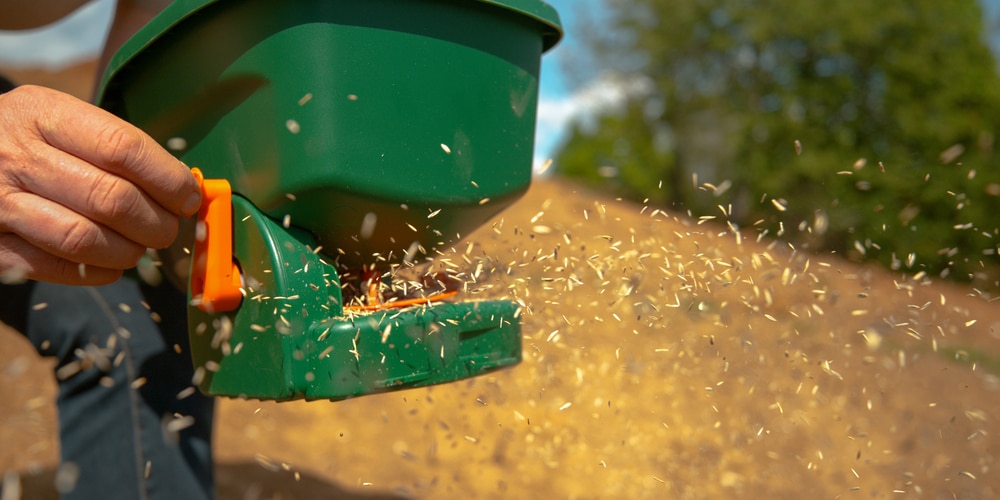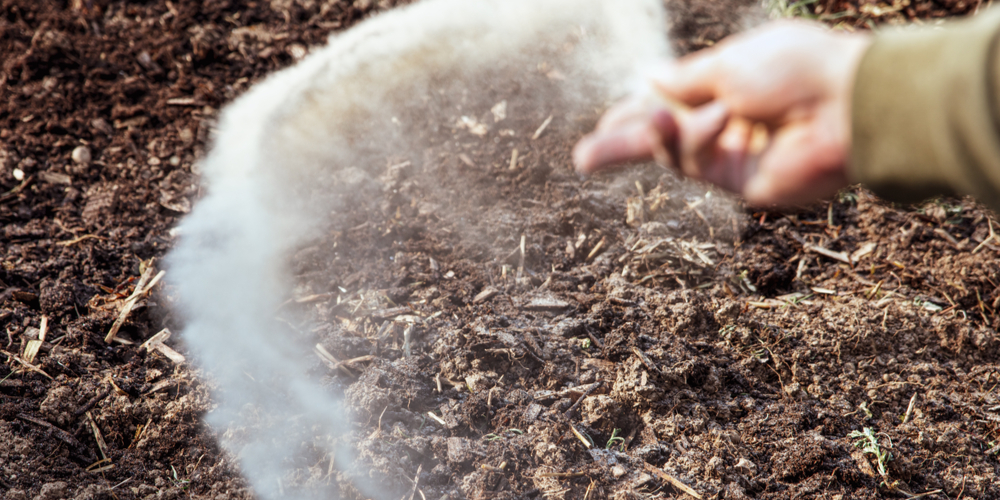There is nothing more frustrating than sowing grass seeds just before a heavy rainstorm. The water washes off the innocent grains, and the ones that remain may not even germinate.
And to top it all off, temperatures may also dip down into the mid to low the 30s, killing the surviving seedlings.
Is putting grass seed down before rain always a bad idea? The short answer is no. In fact, a light shower can speed up germination.
But low temperatures play a critical role after imbibition causing the seeds to remain dormant. So, if the rain also means low temperatures, pools will likely form on the bare spots, halting the germination process.
Is Putting Grass Seed Down Before Rain A Good Idea?

Hurricane season is not what every landowner looks forward to, especially when considering new planting or reseeding of the lawn.
And record-breaking rains are probably not what you have in mind when weighing the pros and cons of putting grass seed down before rain. Nonetheless, the amount of water that falls from the sky is what makes it a good or bad idea.
The key is to see a balance between the two undesirable extremes: drought and downpour. But of course, no one can control the weather. So, your best bet is to keep an eye on the quantitative precipitation forecasts of the National Weather Service.
You should also consider what grass type you are planting because of the varying germination time:
- Bermuda grass is picky about the temperature. In short, it can come up quickly in just five days. But it needs soil temperatures of 75F or above.
- Perennial ryegrass only needs 5 to 7 days. More importantly, it does not needs more than two weeks to establish.
- St. Augustine grass does not need more than two weeks to sprout. But even heavy dew promotes gray leaf spots, which are symptoms of a common fungal infection for this grass type.
- Sun and shade seed mixes can grow fast but usually need a couple of months to get established.
- Tall fescue takes no less than a week to germinate. And after that, it can take a month or more to successfully develop to the point where it can hold itself in place.
Pros & Cons
- Established lawns virtually fear no heavy rainfall. And if you have bare spots, you can cover them with silage tarps. You can find several plastic products to suit different needs. But they will protect an area from excessive rain if the rest of the turf ensures proper drainage.
- Soft drizzles without a lot of rain and wild winds are perfect because they mime what your irrigation system is already doing. This type of rain naturally happens in the morning or early daytime. But thunderstorm rain can pour up to 2 inches of water in just more than 30 minutes. And what is worse, it creates the ideal conditions for fungi and fungal infections.
- When pools form in your bare spots, the seed will float to the top and relocate. On the plus side, you will not lose most of the seeds. They will keep rooting if possible. But if the water starts to rise on the soil surface, the seeds will go with it. The downside is that when seeds shift position and go to a different part of the yard, you will end up with irregular growth patterns. You might have a thin spot or several little bare spots. Again, if you pick a grass type that spreads by stolons, you will probably be ok.
- You can still lessen the damage of washout after heavy rainfall. Once the soil dries, you can go out with a rake and move the seeds into the bare areas. You will see the seeds sitting on the top of the surface and rake them back in position. And after germination happens, you will only need to oversee the remaining bare spot areas.
Putting Grass Seed Down Before Rain: Final thoughts
The quality of your lawn prior to putting grass seed down before rain plays a critical part in seeding success.
In detail, turf areas starting as thin or bare—especially those on a slope—are at much greater risk of not having any seed germinating after rain because the rain can wash them away.
Core aeration can help the seeding process by improving drainage and providing a supplementary foothold in bare spots.
Related Article: What Temperature Kills Grass Seed?
